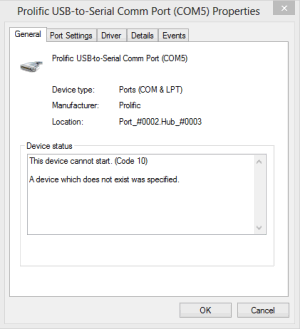
- #GENERIC USB HUB DRIVER WINDOWS 10 64 BIT INSTALL#
- #GENERIC USB HUB DRIVER WINDOWS 10 64 BIT SERIAL#
- #GENERIC USB HUB DRIVER WINDOWS 10 64 BIT DRIVERS#
- #GENERIC USB HUB DRIVER WINDOWS 10 64 BIT UPDATE#
#GENERIC USB HUB DRIVER WINDOWS 10 64 BIT SERIAL#
Select the “Start” option, then begin typing “device manager” in the search box, and pick Device Manager from the generated list.įind the category you’re looking for – Universal Serial Bus controllers – and expand the category to see all devices.įor the device you’re having problems with, right-click that device and select the “update driver” option. If you only want to address one USB connection that is problematic to you, Device Manager is a good alternative.
#GENERIC USB HUB DRIVER WINDOWS 10 64 BIT UPDATE#
That is not always the case, and they may not release every update to Windows Update – including the one causing your problem – promptly. Your only issue with this approach is that you’re counting on the manufacturer of your device to register their driver updates with the Windows Update channel. Windows will search its library for available updates to your system, including drivers, and download them for you to install.
Select Windows Update, and click the Check for Updates button. #GENERIC USB HUB DRIVER WINDOWS 10 64 BIT DRIVERS#
In a WIN 10 environment, drivers can be updated with a few “simple” steps: Your detailed steps may vary slightly depending on the version of Windows you’re utilizing.
#GENERIC USB HUB DRIVER WINDOWS 10 64 BIT INSTALL#
These three methods vary greatly in the level of automation provided for how you install USB drivers.

You have multiple plans of attack to get your USB drivers updated.
Installing the incorrect driver for a device or USB port may cause your system to crash unexpectedlyĪll these issues point directly to USB driver issues, which you can address following one or more of the following procedures. Malware or unrelated system issues may corrupt or damage drivers, rendering them unusable. Outdated drivers can generate conflicts with other system devices. Windows recognizes the device and has automatically installed a driver, but the device still does not work properly – if at all. Your computer recognizes the device, but the device manager displays a yellow “warning” icon, indicating it cannot use the device in its current state. 
Your device is not recognized by the computer when plugged into the USB port. USB Driver IssuesĮspecially after upgrading your operating system or getting a new USB device such as a printer or external drive, you may encounter several types of problems: Like any software, USB drivers can have their own issues. Keeps you current with improvements in the technologyĭrivers are small programs that allow interaction between your computer and other components. Resolves USB driver issues associated with your devices. This ensures not only that they work properly with your version of the operating system on your computer, but provides other advantages as well: In order to make the most efficient use of your available USB ports, it’s your responsibility to keep your USB drivers up-to-date. You can easily identify USB ports by the standard USB symbol located by the ports, with the same symbol often found on the connecting cables accompanying your devices: Nearly any computer sold today is equipped with a fair number of USB ports. External storage devices such as backup drives. Printers, scanners, and all-in-one units. USB ports on your computer are available for connecting an ever-growing family of devices: The goal of this collaborative effort was to establish a common method of connectivity for computer devices, including the communications protocol that enables the exchange of data and instructions between computers and connected peripherals. Universal Serial Bus (USB) standards were conceived and initially developed back in 1994 as a joint effort between multiple technology companies, including Compaq, IBM, Microsoft, Intel, and others. Driver Support/ knowledgebase/ How Do I Update My USB Drivers?.






 0 kommentar(er)
0 kommentar(er)
